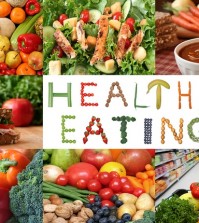- Make It Yourself Lavender Heart-Shaped Bath Bombs!
- 20 Things You Never Knew About “Down There”
- 12 Best Foods For Those Suffering From Arthritis Pain
- 12 Personal Hygiene Mistakes Almost Everyone Makes (Mom Never Told You About #4!)
- 15 Medicinal Plants And Herbs From The Cherokee People
- 12 Mind-Blowing Benefits Of Drinking Coconut Water During Pregnancy
- 12 Outstanding Winter Foods That Won’t Fatten You Up Like A Christmas Turkey
Eat Right, Stay Light: How To Pick Foods That Keep You Full

Photo credit: bigstock.com
2. Calorie Density
The caloric density of a particular food or dish might play the biggest role in determining how long you’ll feel satisfied after eating it. On the surface this seems very simple: more calories equals more fullness, right? Not quite.
It’s not just the number of calories that matter, but also the source of the calories. Calories from liquid, for instance, are not going to fill you up as much as the same amount of calories from solid foods. If you drink 350 calories of soda (not recommended), it will not fill you up as much as 300 calories of meat will.
Related to this, there is also the issue of calories by volume within the food. Food can take up a lot of space in your stomach while still being low in calories, and vice versa. The former is a good option for people who are trying to lose weight. Foods that have a lot of water in them fit this bill perfectly. Broth-heavy soups, salads, and fruits are good examples of foods that will fill you up, but don’t have a lot of calories. This will prevent you from feeling hungry again soon after.
On the opposite end of the spectrum are foods like meat, potatoes and legumes. These foods are high in calories by volume, and will keep you feeling satisfied for hours. Items such as lentils, rice, beans, steak and poultry are good options for someone trying to gain muscle mass and strength.
Based on your nutritional needs and fitness goals, alter your diet as needed according to these guidelines.
Continue to Page 3
































